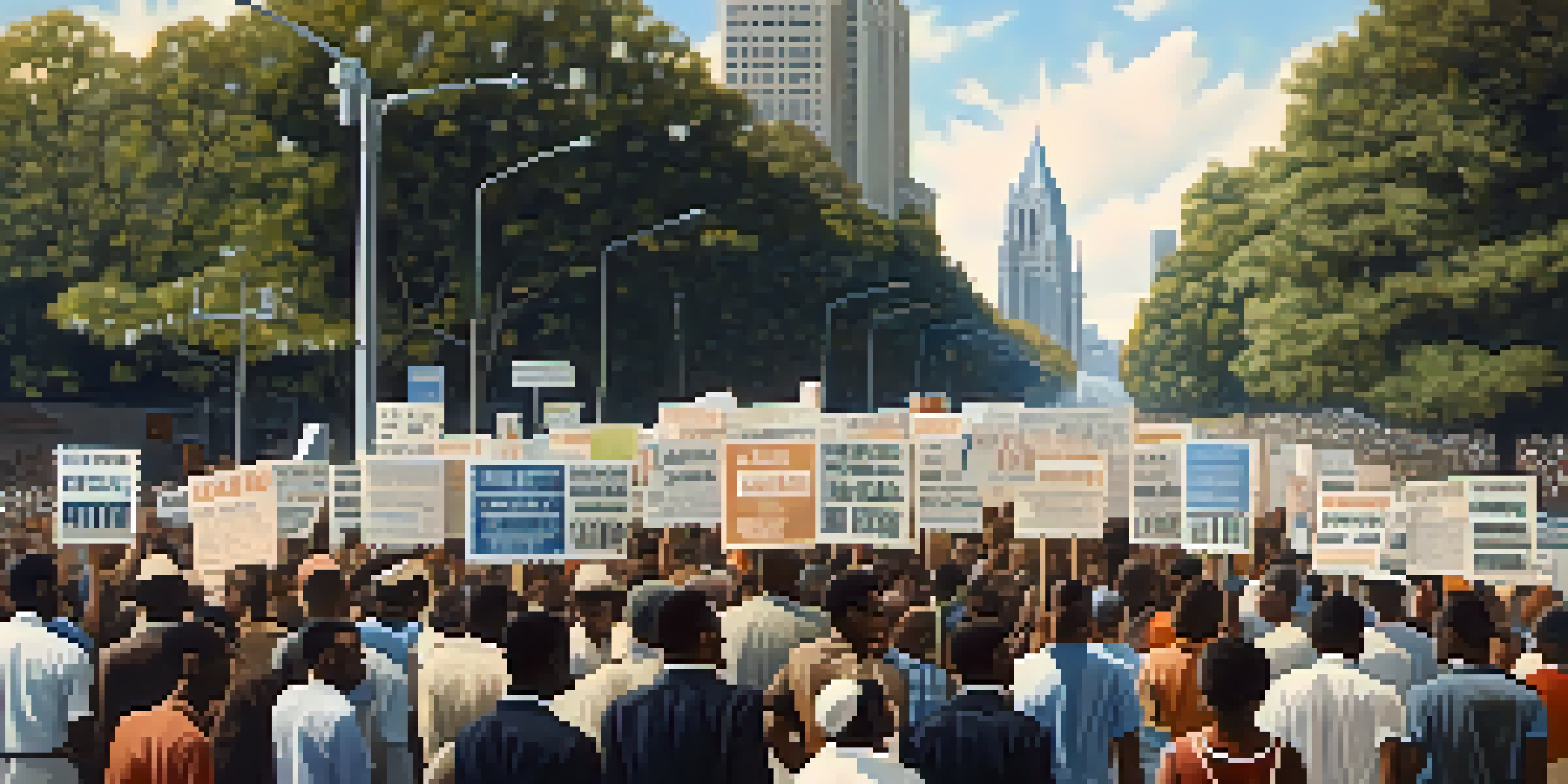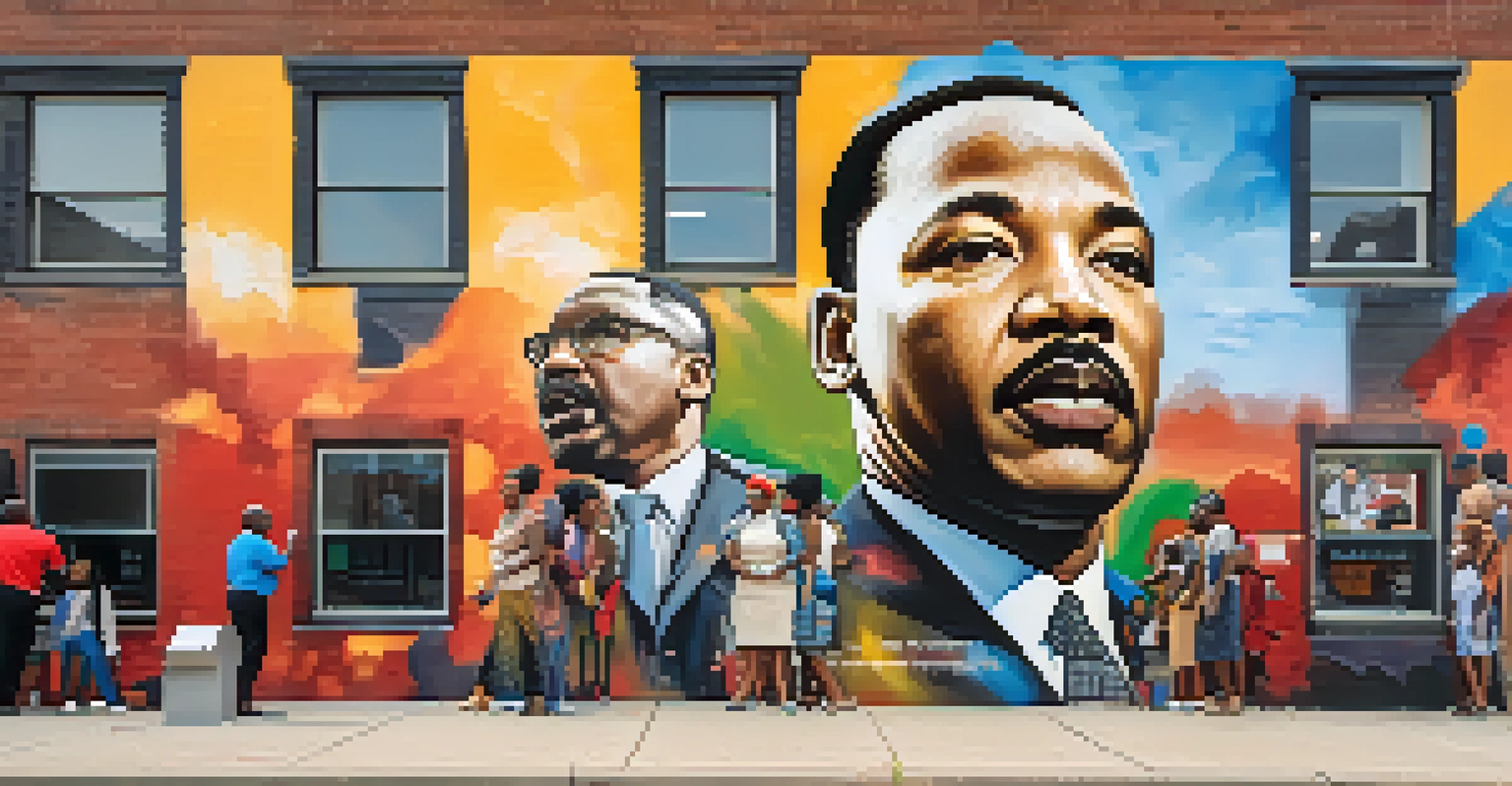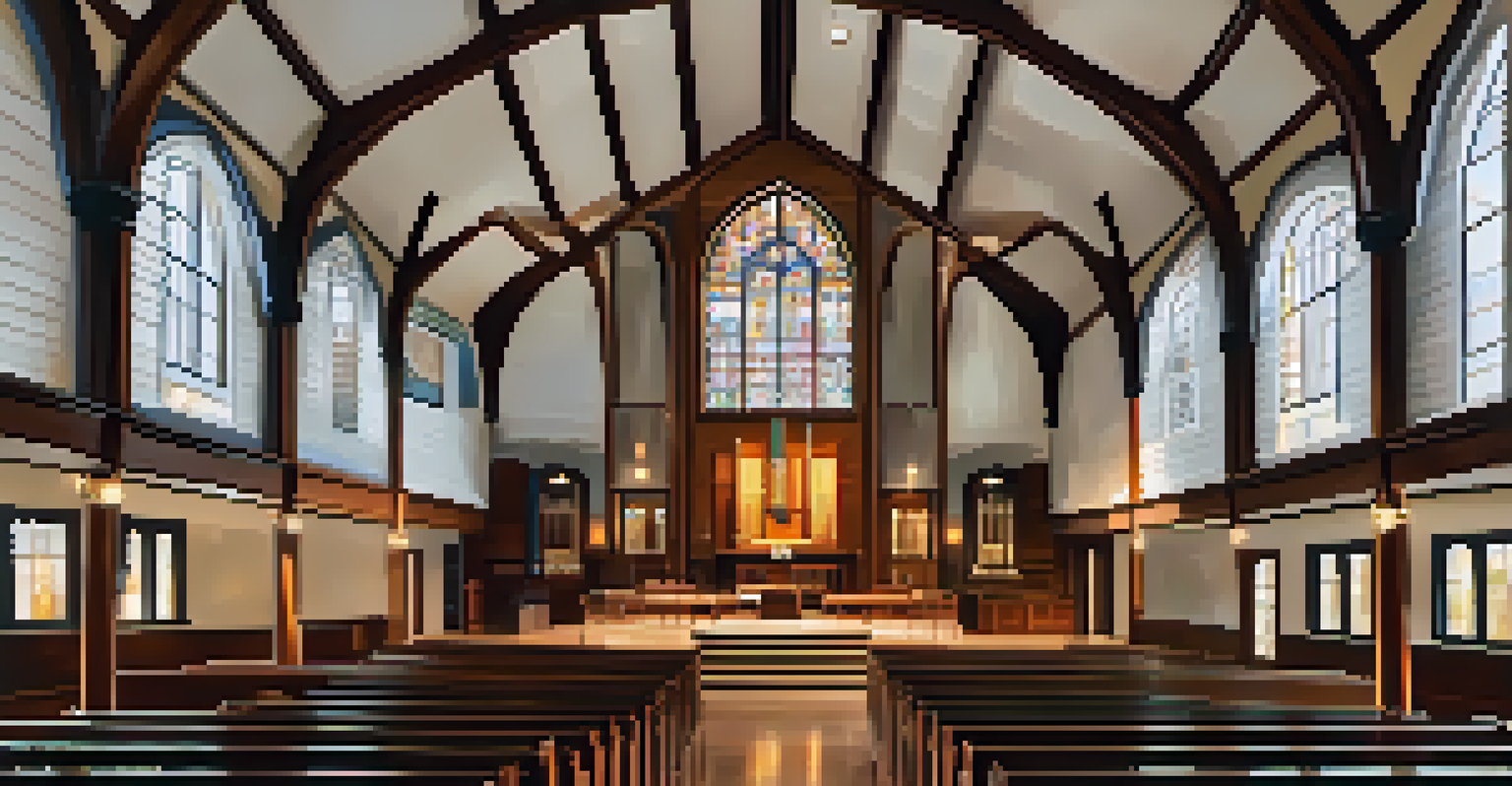Documenting Atlanta's Civil Rights History: A Visual Journey

Introduction to Atlanta's Civil Rights Movement
Atlanta has long been a pivotal city in the struggle for civil rights in America. Its streets echoed with the voices of brave activists who fought for equality and justice, shaping the nation’s history. From the early 20th century to the present day, Atlanta’s narrative is intertwined with the broader civil rights movement, making it a living testament to perseverance and hope.
Injustice anywhere is a threat to justice everywhere.
This visual journey showcases the compelling stories of individuals and groups who played a crucial role in this transformative era. By examining photographs, documents, and art, we can better understand the sacrifices made by countless people. Each image serves as a window into the past, allowing us to witness the resilience of a community united for change.
Through this exploration, we not only remember the struggles but also celebrate the victories that have shaped Atlanta and the nation. This article aims to inspire a new generation to continue advocating for justice, using the lessons from history as their guide.
Key Figures in Atlanta's Civil Rights History
Atlanta's civil rights movement was propelled by influential leaders such as Dr. Martin Luther King Jr., Ralph Abernathy, and Andrew Young. These figures championed nonviolent protest and advocacy, and their legacies continue to resonate today. Their commitment to justice and equality inspired countless others to join the movement, creating a powerful force for change.

Visual documentation of their efforts includes iconic photographs from marches, speeches, and community meetings. These images capture not only their determination but also the spirit of the people who rallied alongside them. Each visual serves as a reminder of the collective strength needed to confront systemic racism and inequality.
Atlanta's Civil Rights Legacy
Atlanta's history is deeply intertwined with the civil rights movement, showcasing the resilience and determination of its activists.
By studying these key figures through photographs and stories, we gain insights into their motivations and the impact of their work. Their journeys remind us that change often starts with individuals willing to stand up for what is right, encouraging us to be advocates in our own communities.
Landmarks of the Civil Rights Movement in Atlanta
Atlanta is home to numerous landmarks that played significant roles in the civil rights movement. Locations like the Ebenezer Baptist Church, where Dr. King preached, and the National Center for Civil and Human Rights serve as powerful reminders of the past. These sites not only preserve history but also provide educational resources for future generations.
The time is always right to do what is right.
Photographs of these landmarks evoke a sense of connection to the events that unfolded within their walls. Each building tells a story, from the meetings held to strategize protests to the gatherings that inspired hope and action. They are tangible links to the struggles and triumphs that define Atlanta’s civil rights legacy.
Visiting these sites allows individuals to walk in the footsteps of those who fought for equality. It transforms abstract historical lessons into personal experiences, deepening our understanding of the ongoing fight for civil rights. This immersive journey highlights the importance of preserving these landmarks for future reflection and inspiration.
The Role of Art in Documenting Civil Rights History
Art has always been a powerful medium for expressing the struggles and aspirations of the civil rights movement. From murals to photography, artists have captured the essence of this pivotal time in history. Their works not only document events but also evoke emotions, prompting reflection and dialogue about race and justice.
Visual art serves as a catalyst for change, allowing marginalized voices to be heard and understood. In Atlanta, artists have created pieces that honor the legacy of civil rights leaders while also addressing contemporary issues. These artworks provide a platform for ongoing conversations about equality and social justice.
Influential Leaders Shine Through
Key figures like Dr. Martin Luther King Jr. and Andrew Young exemplify the power of nonviolent advocacy in the fight for equality.
By engaging with art, we can better appreciate the complexities of the civil rights movement. It encourages us to think critically about our society and our role within it. This connection between art and activism illustrates the enduring power of creativity in the quest for justice.
Educational Initiatives to Preserve Civil Rights History
Education plays a crucial role in preserving and sharing Atlanta's civil rights history. Institutions and organizations offer programs that focus on the significance of this era, targeting schools, community groups, and the general public. These initiatives aim to raise awareness and foster a deeper understanding of the ongoing struggles for equality.
Visual documentation, including photographs and documentaries, enhances educational efforts by providing compelling narratives. Such resources help educators engage students in meaningful discussions about civil rights and its relevance today. By using visual aids, we can bring history to life, making it accessible and relatable.
Through these educational initiatives, we empower individuals to become informed advocates for social justice. Understanding the past is essential for shaping a more equitable future. By learning from history, we can continue the fight for civil rights and ensure that the lessons of the past are not forgotten.
The Impact of Technology on Documenting History
In today’s digital age, technology plays a vital role in documenting and sharing civil rights history. Websites, social media platforms, and virtual exhibits make it easier for people to access information and engage with the past. This accessibility fosters a broader understanding of the civil rights movement, reaching audiences far and wide.
Digital tools allow for innovative storytelling, combining visuals, audio, and interactive elements. For instance, virtual reality experiences can immerse individuals in historical events, creating a lasting impact. These technologies enhance our ability to connect with history, making it relevant to younger generations who consume information differently.
Art and Education Preserve History
Art and educational initiatives play a crucial role in documenting and sharing the stories of the civil rights movement, inspiring future generations.
As we embrace technology, we must also remain mindful of the importance of authentic storytelling. Ensuring that narratives are respectful and accurate is essential to honoring those who fought for civil rights. By leveraging technology thoughtfully, we can create a more inclusive dialogue about history and its ongoing significance.
Looking Ahead: Continuing the Legacy of Civil Rights
As we reflect on Atlanta's civil rights history, it’s crucial to consider how we can continue this legacy today. The fight for equality and justice is far from over, and it requires ongoing commitment from all of us. By learning from the past, we can better understand the challenges we face and work towards a more equitable society.
Engaging with civil rights history through visual documentation inspires action. It encourages individuals to recognize their role in advocating for social justice, whether through community involvement, education, or activism. Each person has the power to make a difference, and history provides the roadmap for how to do so.

In conclusion, documenting Atlanta's civil rights history is not just about remembering the past; it's about shaping the future. By honoring the struggles and victories of those who came before us, we can build on their legacy and work towards a world where justice and equality are truly attainable for all.